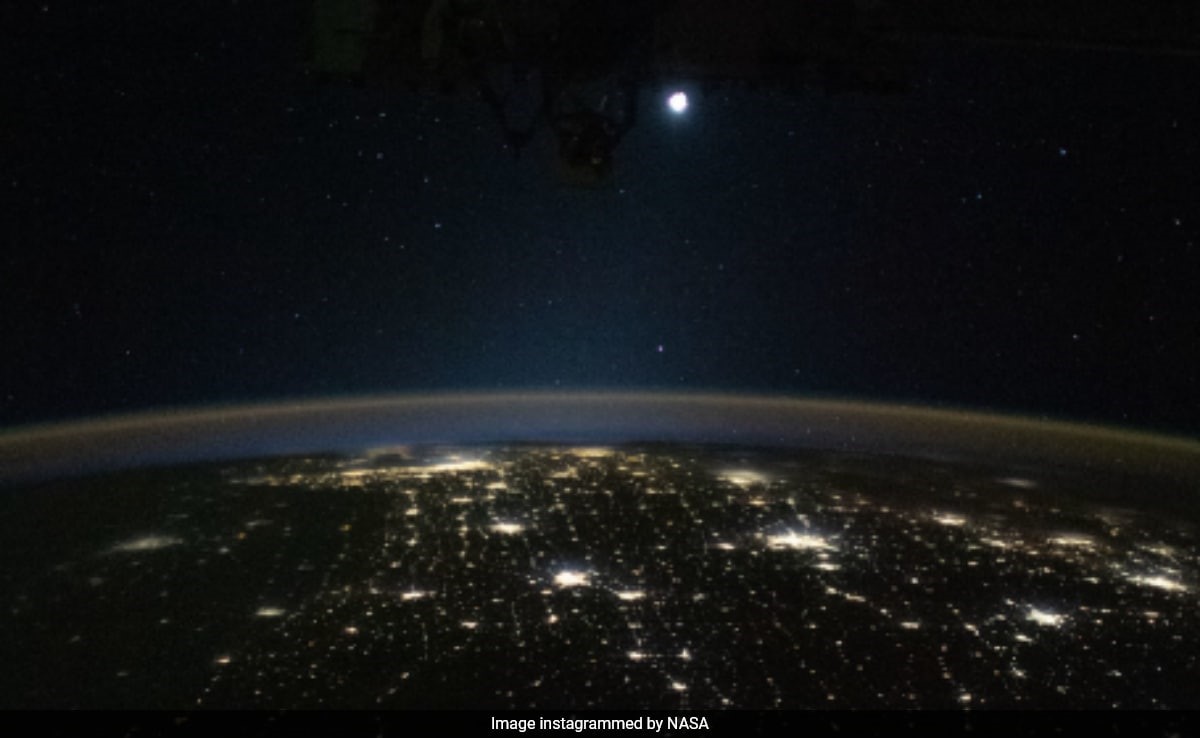Description

Disclaimer: Copyright infringement not intended.
Context
- NASA shares image of Earth’s 'airglow' taken from the international space station.
Details
- The Atmospheric Waves Experiment (AWE) by NASA is a pioneering mission aimed at comprehensively studying the interactions between terrestrial and space weather, focusing on the Earth's atmospheric waves and their impacts on space weather.
- The experiment is crucial due to its potential implications for satellite-based services, communication systems, and power grids affected by space weather events.
Importance of Space Weather
- Impact on Earth's Technology: Space weather events, influenced by solar activities and the Earth's environment, can disrupt crucial infrastructure such as satellite communication, GPS navigation, radio communication, and power grids.
- Influence of Terrestrial Weather: Terrestrial weather, including extreme events like thunderstorms and hurricanes, can generate atmospheric gravity waves (AGWs) that affect the atmosphere's stability and contribute to space weather.
Understanding Gravity Waves and Airglow
- Gravity Waves: AGWs are vertical waves generated by extreme weather events or disturbances, causing vertical displacements of stable air. They contribute to a wave-like pattern in the atmosphere, propagating upwards to the upper atmosphere and even into space.
- Airglow and its Significance: Airglow, observed as faint, colorful light bands in the sky, is caused by interactions between atoms and molecules in the upper atmosphere. These light emissions are crucial indicators of the atmosphere's behavior and can provide insights into space weather dynamics.
Atmospheric Waves Experiment (AWE) Goals
- Studying Terrestrial and Space Weather Interactions: AWE aims to investigate how waves in the lower atmosphere impact the upper atmosphere and space weather phenomena.
- Mounted on the ISS: AWE will be launched and mounted on the International Space Station (ISS), providing a vantage point to observe and record airglow patterns on Earth.
- Mapping Airglow: Using instruments like the Advanced Mesospheric Temperature Mapper (ATMT), AWE will scan the mesopause region to map airglow brightness at specific wavelengths.
- Temperature Mapping: Data obtained from AWE will be converted into temperature maps, aiding in understanding airglow movements and their role in the upper atmosphere and space weather.
.jpg)
Significance
- AWE's ability to study airglow at finer scales and provide temperature mapping could enhance understanding of atmospheric dynamics, gravity wave behaviors, and their influence on space weather.
- Insights gained from this experiment could lead to improved space weather forecasts, aiding in protecting and maintaining vital technological infrastructure.
About Airglow
- Airglow refers to the faint emission of light by the Earth's atmosphere, predominantly at night, that occurs due to various chemical reactions and interactions between molecules and atoms in the upper atmosphere.
- This natural phenomenon creates a subtle luminescence, usually visible as a faint, diffuse glow in the sky.
Properties and Causes of Airglow:
- Chemical Reactions: Airglow primarily results from chemical reactions involving atoms and molecules in the Earth's upper atmosphere, typically at altitudes between 80 to 100 kilometers above the Earth's surface.
- Excitation of Molecules: When atoms and molecules in the upper atmosphere absorb high-energy solar radiation (ultraviolet or X-rays), they get excited. As these excited particles return to their stable states, they release energy in the form of faint light, creating the airglow.
- Composition of Airglow: The primary components responsible for airglow are various atmospheric gases, including atomic oxygen, hydroxyl (OH) molecules, sodium, and other trace elements. Each of these contributes to the overall appearance and color of the airglow.
Types of Airglow:
- Green Airglow: The most common type of airglow appears as a greenish hue in the night sky, primarily due to the excitation and subsequent emission of oxygen atoms at lower altitudes in the atmosphere.
- Red Airglow: At higher altitudes, atomic oxygen emits a red coloration, but this is less commonly observed compared to the green airglow.
- Other Colors: Airglow can also display other colors depending on the atmospheric composition and altitude, including blue, yellow, and purple hues.
Significance and Scientific Research:
- Study of Upper Atmosphere: Monitoring and studying airglow helps scientists understand the composition and dynamics of the upper atmosphere. It provides valuable insights into atmospheric chemistry, circulation patterns, and interactions with solar radiation.
- Space Weather Research: Airglow serves as a tool for studying space weather phenomena, such as the effects of solar activity on the Earth's atmosphere.
- Remote Sensing Applications: Researchers use airglow observations for remote sensing applications, aiding in the study of atmospheric processes, climate change, and the behavior of upper atmospheric layers.

Conclusion
Airglow, a natural atmospheric phenomenon resulting from chemical reactions and interactions at high altitudes, contributes to the subtle luminescence observed in the night sky. Its study not only enriches our understanding of atmospheric dynamics but also aids in various scientific research endeavors, including space weather monitoring and remote sensing applications.
|
PRACTICE QUESTION
Q. Discuss the significance of airglow in understanding space weather and its implications for Earth's atmospheric dynamics. (250 Words)
|











